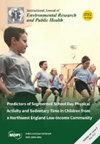COVID-19 封锁对空气质量影响的比较评估:关于 SARS-CoV-2 热点的跨国研究
3区 综合性期刊
Q1 Medicine
International Journal of Environmental Research and Public Health
Pub Date : 2024-09-03
DOI:10.3390/ijerph21091171
引用次数: 0
摘要
为应对全球 COVID-19 大流行,各国采取了封锁措施来遏制病毒。本研究评估了封锁期间和封锁后的空气污染水平,重点关注以下受影响严重的地区:芬兰的奥卢和赫尔辛基、法国的巴黎、西班牙的马德里、意大利的米兰和中国的武汉。研究人员分析了这些地点两年来的空气质量指数 (AQI) 数据,以了解封锁的影响。研究采用统计方法,将这六个城市的 COVID-19 封锁与 SARS-CoV-2 测量结果进行了比较。通过测试评估了室外污染物的变化,发现了显著的差异。采用参数分析和回归法研究了封锁措施对污染的影响及其关系。该研究全面分析了 COVID-19 封锁措施对空气质量的影响,确定了各城市的差异、量化了变化并探索了模式。在封锁期间,各城市的污染物相关性各不相同。回归分析强调了自变量对污染物的影响。在赫尔辛基、马德里、奥卢、巴黎和米兰观察到二氧化氮减少,这反映了交通和工业活动的减少。这些城市和武汉的 PM2.5 和 PM10 均有所下降,但 O3 水平有所上升。人类活动的减少改善了空气质量,尤其是二氧化氮和 PM10。地区差异突出表明需要采取有针对性的干预措施。研究观察到,在 COVID-19 封锁期间,PM2.5 和二氧化氮水平均大幅下降,这表明人类活动(如交通和工业运营)的减少与空气质量的改善之间存在直接关联。这强调了环保措施的潜在影响,并表明有必要采取可持续的做法来减轻城市污染。本文章由计算机程序翻译,如有差异,请以英文原文为准。
Comparative Assessment of the Impact of COVID-19 Lockdown on Air Quality: A Multinational Study of SARS-CoV-2 Hotspots
In response to the global COVID-19 pandemic, nations implemented lockdown measures to contain the virus. This study assessed air pollution levels during and after lockdowns, focusing on the following heavily affected locations: Oulu and Helsinki in Finland, Paris in France, Madrid in Spain, Milan in Italy, and Wuhan in China. Air Quality Index (AQI) data from these locations over two years were analyzed to understand the effects of lockdowns. The study compared COVID-19 lockdowns in these six cities with SARS-CoV-2 measurements using statistical methods. Variations in outdoor pollutants were evaluated through tests, revealing significant differences. Parametric analyses and regression were employed to study the impacts of lockdown measures on pollution and their relationships. The study comprehensively analyzed the effects of COVID-19 lockdowns on air quality, identifying differences, quantifying changes, and exploring patterns in each city. Pollutant correlations varied among cities during the lockdowns. Regression analysis highlighted the impact of independent variables on pollutants. Decreases in NO2 were observed in Helsinki, Madrid, Oulu, Paris, and Milan, reflecting reduced traffic and industrial activities. Reductions in PM2.5 and PM10 were noted in these cities and in Wuhan, except for O3 levels, which increased. The reduction in human activities improved air quality, particularly for NO2 and PM10. Regional variations underscore the need for tailored interventions. The study observed a substantial decrease in both PM2.5 and NO2 levels during the COVID-19 lockdowns, indicating a direct correlation between reduced human activities, such as transportation and industrial operations, and improved air quality. This underscores the potential impact of environmental measures and suggests the need for sustainable practices to mitigate urban pollution.
求助全文
通过发布文献求助,成功后即可免费获取论文全文。
去求助
来源期刊

International Journal of Environmental Research and Public Health
Medicine-Public Health, Environmental and Occupational Health
CiteScore
7.30
自引率
0.00%
发文量
14422
审稿时长
1 months
期刊介绍:
International Journal of Environmental Research and Public Health (IJERPH) (ISSN 1660-4601) is a peer-reviewed scientific journal that publishes original articles, critical reviews, research notes, and short communications in the interdisciplinary area of environmental health sciences and public health. It links several scientific disciplines including biology, biochemistry, biotechnology, cellular and molecular biology, chemistry, computer science, ecology, engineering, epidemiology, genetics, immunology, microbiology, oncology, pathology, pharmacology, and toxicology, in an integrated fashion, to address critical issues related to environmental quality and public health. Therefore, IJERPH focuses on the publication of scientific and technical information on the impacts of natural phenomena and anthropogenic factors on the quality of our environment, the interrelationships between environmental health and the quality of life, as well as the socio-cultural, political, economic, and legal considerations related to environmental stewardship and public health.
The 2018 IJERPH Outstanding Reviewer Award has been launched! This award acknowledge those who have generously dedicated their time to review manuscripts submitted to IJERPH. See full details at http://www.mdpi.com/journal/ijerph/awards.
 求助内容:
求助内容: 应助结果提醒方式:
应助结果提醒方式:


